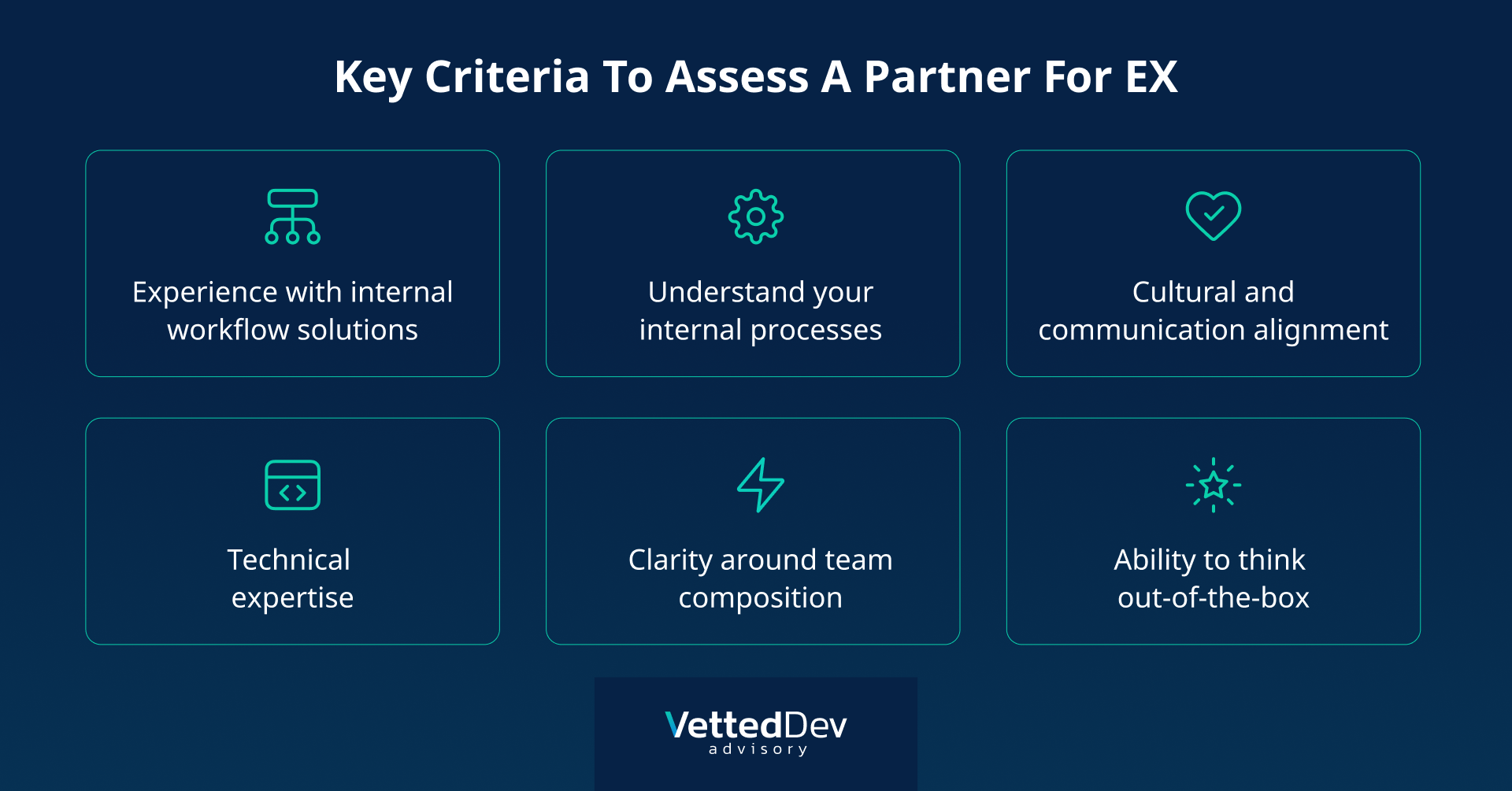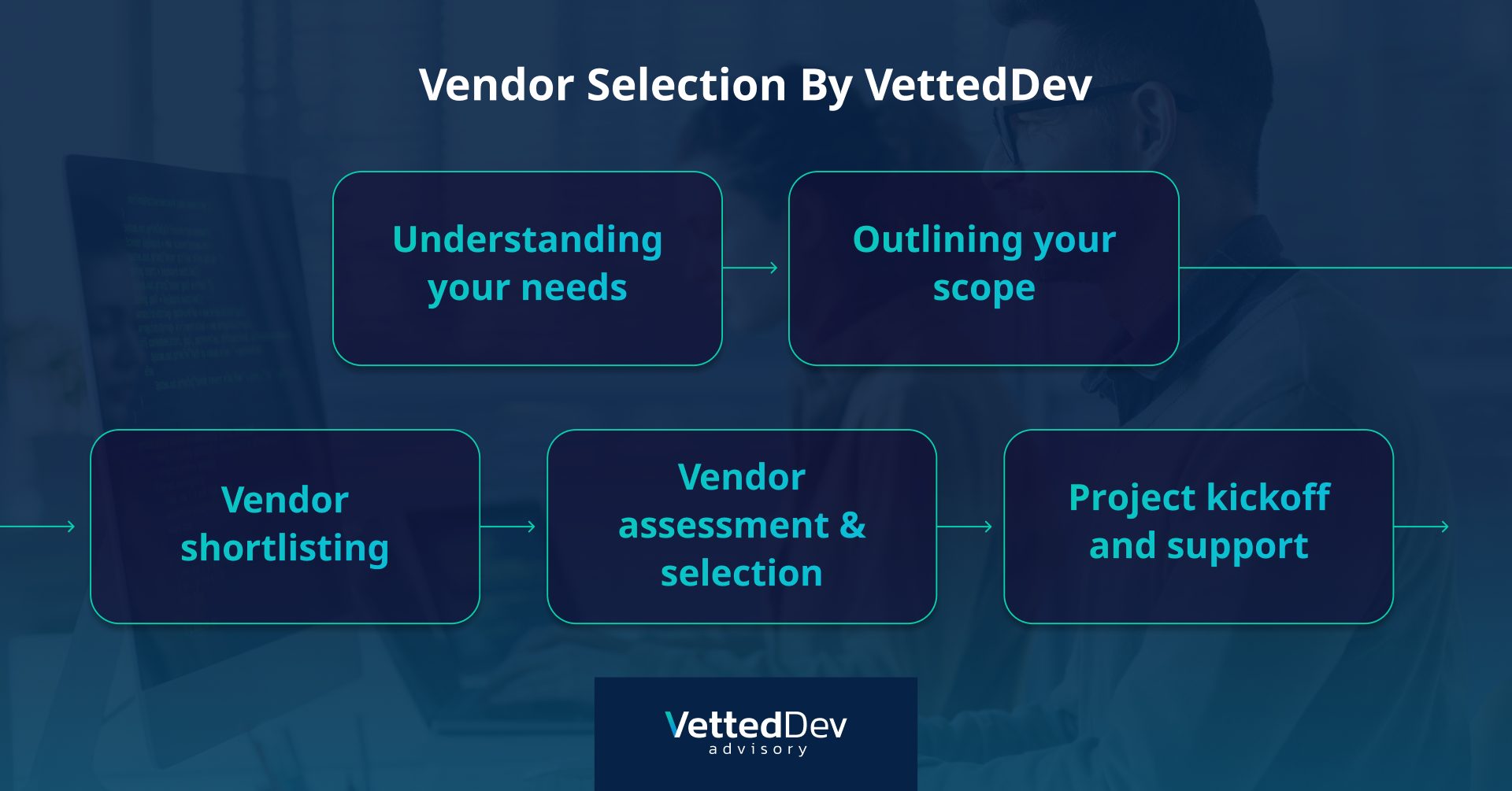Finding the Right Outsourcing Partner for Digital Transformation:
Why Employee Experience Should Drive Your Vendor Choice
When most companies think of digital transformation, they imagine sleek customer portals, modern tech stacks, or a sudden shift to the cloud. But the most overlooked and most impactful transformation opportunity is often internal.
Your employee experience is the way your team interacts with tools, processes, and each other can either fuel productivity or quietly drag your company down.
If you’re considering outsourcing a digital initiative to improve how your team works, this article walks you through what matters most when choosing the right development partner. Spoiler: it’s not the lowest rate or the flashiest pitch deck.
Why Employee Experience Is a Digital Priority
For years, digital transformation efforts focused primarily on the customer journey and for good reason. A clunky website or slow onboarding process directly hits revenue.
But now, companies are realizing that their internal systems are just as critical. Poor employee experience leads to:
- Wasted hours on manual work
- Frustration and burnout
- Talent churn
- Missed opportunities due to poor visibility
- Bottlenecks in scaling operations
From HR systems to reporting dashboards to mobile tools for remote teams the internal tech stack needs just as much attention as customer-facing products.
And in an era where remote work, automation, and talent competition are the norm, organizations that neglect internal systems are putting themselves at a strategic disadvantage.
Modernizing these systems is no longer a luxury and is essential to productivity, employee retention, and long-term growth.

Why Companies Outsource Internal Tools & Platforms
You may have the vision, the budget, and the pressure to act fast but not the in-house bandwidth or technical expertise to build what’s needed.
Outsourcing a custom solution can:
- Save time by tapping into specialized dev teams
- Bring in objective insight on platform design
- Avoid the cost of long-term internal hiring
- Accelerate delivery with tried-and-true processes
- Increase confidence through a proven delivery methodology
For many companies, especially small to mid-sized businesses, outsourcing is the only viable way to execute a meaningful transformation initiative without derailing other priorities.
But success hinges on picking the right partner.
The Risk of the Wrong Partner
Too often, companies hire a vendor based on polished presentations or low pricing only to end up with:
- A generic tool that doesn’t match their workflow
- Poor communication and scope creep
- A team that lacks domain knowledge or internal system experience
- Overbuilt, overbudget platforms that no one ends up using
Unlike customer-facing apps, internal platforms must reflect your business logic, org structure, and user needs with a high degree of nuance. Generic agencies often miss that.
And unlike packaged SaaS tools, a custom internal solution should evolve with your organization. If built poorly, you may find yourself stuck with something inflexible, costly to change, and increasingly misaligned.

What to Look for in a Digital Transformation Partner for Employee Experience
Here are the key criteria to evaluate when outsourcing this kind of work:
1. Experience With Internal Platforms, Not Just Products
Some vendors specialize in building SaaS products or marketing websites. That’s not what you need.
Look for teams that have built:
- Admin dashboards
- Operations and HR systems
- Document or knowledge management platforms
- Custom CRMs or ERPs
- Mobile tools for internal use
Ask for case studies where the users were employees, not customers.
A development team used to building internal systems will think differently about security, access control, usability, data accuracy, and integration. This experience is crucial.
2. Understanding of Business Processes
Internal software is only valuable if it aligns with your actual workflows. A good vendor should:
- Ask deep questions about your processes and pain points
- Understand org charts, roles, and permissions
- Suggest automation or improvements you may not have considered
- Be curious about how your team works — not just what you want built
You want a partner who thinks like a product owner, not a coding service. Someone who listens carefully and helps translate your organizational knowledge into a high-functioning system.
3. Cultural Fit and Communication Style
If you’re in North America, working with a dev shop 10 time zones away might sound cost-effective until communication breaks down.
You want:
- Time zone overlap (at least 2–4 hours per day)
- Strong spoken and written English
- Project managers who are proactive, not passive
- A team that “gets it” without constant micromanagement
Eastern European teams, while technically offshore, often strike a good balance for North American firms in terms of skill, reliability, and professionalism — if communication is handled well. They’re typically more aligned with Western business practices and offer strong English proficiency and technical education.
4. Right-Size Technical Approach
Some dev shops will pitch heavyweight architectures or suggest rebuilding everything from scratch. Others will over-index on speed and deliver something brittle.
You want a team that:
- Uses frameworks and tools appropriate for your scale
- Can integrate with existing systems when needed
- Thinks ahead about maintenance and handoff
- Balances speed with sustainability
Also consider their DevOps practices: Will they provide CI/CD pipelines? Is the codebase well-documented? Are their handoffs clean and maintainable?
5. Transparency on Resourcing
Ask who will actually be doing the work.
Is it a senior-led team, or will your project be staffed with junior devs after kickoff?
Clarify:
- Team composition (devs, PMs, QA, UX)
- Their availability and focus (shared or dedicated)
- Turnover risk and continuity planning
You don’t want to be a training ground for their new hires — and you don’t want to lose your lead developer mid-way through the project.
6. Ability to Think Beyond Code
This is key: your ideal partner should care about outcomes, not just deliverables.
- Can they help define KPIs for success?
- Will they advise on UX or onboarding?
- Do they ask how success will be measured?
- Will they offer honest feedback if something won’t work?
You don’t want code. You want a better employee experience. Make sure they get that.
Ask how they ensure adoption post-launch. Do they help with change management? Do they train internal champions? Those services can make or break long-term value.

Why Use VettedDev to Help You Choose?
Here’s where we come in.
We’ve spent the last decade sitting on both sides of the vendor equation selling dev services and buying them as part of internal SaaS teams. We know how easy it is to choose wrong, and how much that choice can cost you in time, budget, and team morale.
At VettedDev, we:
✅ Help you define your needs and constraints
✅ Shortlist truly relevant dev partners (no bias, no kickbacks)
✅ Know which vendors are strong in internal tools vs customer-facing products
✅ Evaluate communication, technical fit, domain expertise, and risk
✅ Stay with you through vendor interviews, proposals, and contract review
We’ve done this for dozens of digital transformation projects and our goal is always the same:
Match you with a partner who delivers not just code, but clarity, usability, and real impact.
A Few Employee-Facing Solutions We’ve Helped Enable
- A mobile tool for frontline retail workers to manage shift swaps, documents, and reporting
- A custom platform integrating HR, project planning, and resource allocation for a distributed team
- A data visualization dashboard for internal business units to track KPIs and outcomes
- An AI-enhanced knowledge base for a company’s internal support team
- A custom CRM tailored to complex B2B sales workflows and handoffs
Every one of those clients had unique operational DNA. And each needed a vendor that could build accordingly.
The VettedDev Process: Smart Vendor Selection, End-to-End
We believe a structured selection process leads to better outcomes. Here’s what it typically looks like:
- Needs Assessment
We define your business goals, process bottlenecks, existing tech stack, and team pain points. - Scope & Prioritization
We break down the ideal outcomes into MVP milestones and realistic timelines. - Partner Shortlisting
We filter and recommend top vendors based on fit, not familiarity — with complete transparency. - Interview & Evaluation
We coach you through interviews, evaluate proposals side-by-side, and dig deeper where needed.
Kickoff Support
Once you select a vendor, we assist with alignment, success criteria, and post-launch planning.

Final Thoughts: Your Team Deserves Better Tools
Your employees are your most valuable asset. If your systems frustrate them, your business pays the price.
Outsourcing custom digital tools for internal use can be transformative — but only if you choose a partner who understands your workflows, thinks like a business owner, and delivers lasting value.
Let us help you find that partner.
👉 Schedule a Free Consultation with VettedDev
Bonus: Mistakes to Avoid When Choosing a Partner
Sometimes knowing what not to do is just as helpful as knowing what to do. Here are a few common mistakes companies make when choosing a digital transformation vendor:
- Prioritizing price over fit. Cheap now often means costly later. Pay for alignment, not just code.
- Not involving actual users early enough. Get employee feedback into the design process from the start.
- Skipping pilot or MVP phases. Validate assumptions quickly. Big bang rollouts often backfire.
- Relying solely on references. Ask for walkthroughs, not just quotes. Look at how something was built.
- Assuming a project ends at launch. Post-launch support is crucial — from bug fixes to training to iteration.
Learning from others’ missteps can save you massive time, frustration, and rework.

Want to Chat? We’re Here to Help.
You don’t need to navigate this alone. Whether you’re at the planning stage or already evaluating vendors, we’d love to learn more about your goals and offer honest, experienced guidance.
📩 Reach out to us anytime, or grab a time that works for you here:
For more insights on finding the right outsourcing partner? Visit VettedDev.net for guides, tips, and curated recommendations.
